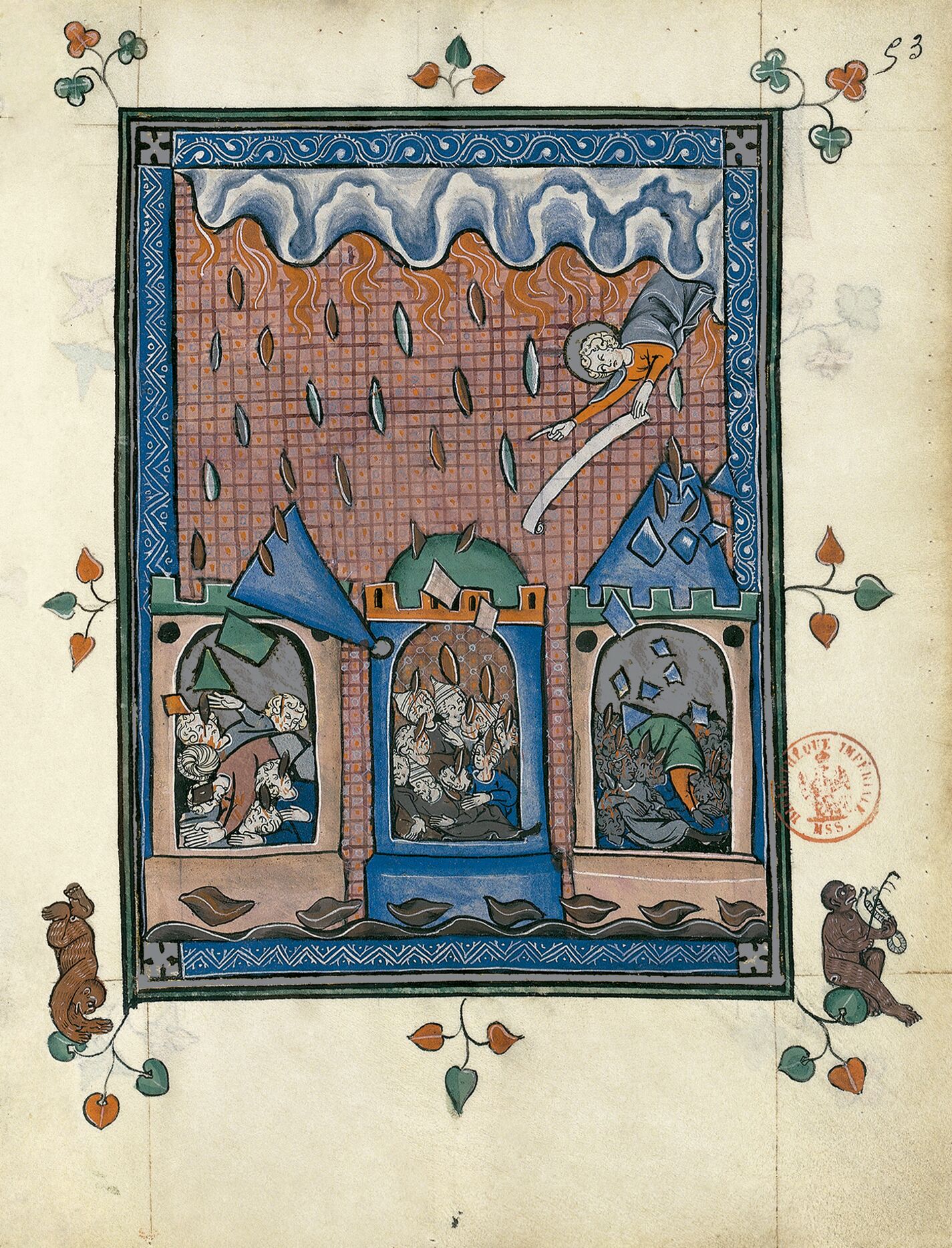This is the moment when God recalls Babylon and gives her the bowl bubbling with the wine of his wrath. The illustration of the sequence has been moved to f. 52v, near the witness at his desk. Portrayed near a mandorla containing Christ at the Last Judgement showing his non-bleeding wounds, is a king in armour who defiantly raises the gold goblet full of God’s wrath that he has just received. This king, who represents the power of the world and symbolises the might of the Great City and the Antichrist, is accompanied by three soldiers armed with powerful spears featuring finely decorated blades. The sinister, grimacing faces of these hellish warriors and the emblems – a bear’s head and boar’s head – embellishing the shield and shoulder plates of one of them confirm that they belong to the forces of Evil.
Marie-Thérèse Gousset and Marianne Besseyre
Illuminated Manuscripts Research Center, Bibliothèque nationale de France
Fragment of the Apocalypse of 1313 commentary volume

This is the moment when God recalls Babylon and gives her the bowl bubbling with the wine of his wrath. The illustration of the sequence has been moved to f. 52v, near the witness at his desk. Portrayed near a mandorla containing Christ at the Last Judgement showing his non-bleeding wounds, is a king in armour who defiantly raises the gold goblet full of God’s wrath that he has just received. This king, who represents the power of the world and symbolises the might of the Great City and the Antichrist, is accompanied by three soldiers armed with powerful spears featuring finely decorated blades. The sinister, grimacing faces of these hellish warriors and the emblems – a bear’s head and boar’s head – embellishing the shield and shoulder plates of one of them confirm that they belong to the forces of Evil.
Marie-Thérèse Gousset and Marianne Besseyre
Illuminated Manuscripts Research Center, Bibliothèque nationale de France
Fragment of the Apocalypse of 1313 commentary volume